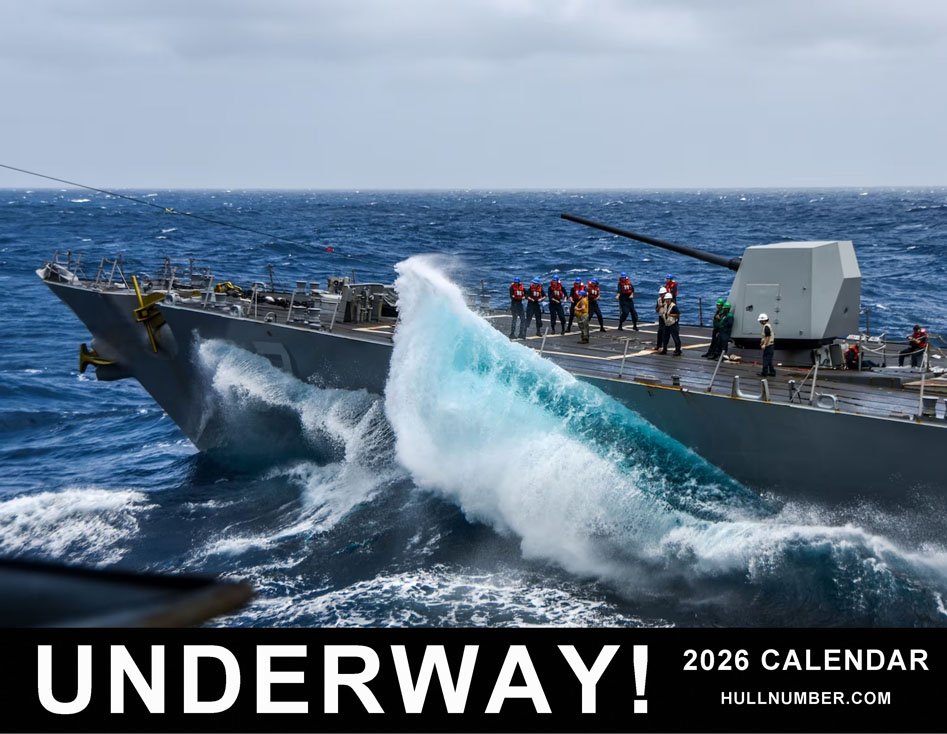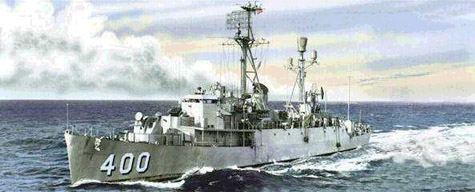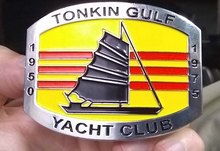 |
|||||||
| UNDERWAY! 2026 WALL CALENDAR is AVAILABLE - CLICK HERE |
|||||||
 |
|||||||
 |


U.S.S. HISSEM
(DE-400)TRIM BUT DEADLY
Click to view crew list
USS HISSEM (DE-400) - an Edsall-class destroyer escort
In Commission 1944 to 1970DE-400 Deployments - Major Events
| Add a DE-400 Shellback Initiation | Add a DE-400 Deployment - Major Event | ||||
| Month | Year | to | Month | Year | Deployment / Event |
|---|---|---|---|---|---|
| DEC | 1943 | - | Launch Date: 26 DEC 1943 | ||
| JAN | 1944 | - | Commissioned: 13 JAN 1944 | ||
| SEP | 1958 | - | AUG | 1960 | North Atlantic |
| OCT | 1962 | - | OCT | 1962 | Cuban Missle Blockade |
| AUG | 1963 | - | Shellback Initiation - 22 AUG 1963 - Pacific Ocean | ||
| DEC | 1963 | - | JAN | 1964 | Antarctic Circle |
| JAN | 1965 | - | JAN | 1966 | West Pac-Viet Nam |
| MAY | 1967 | - | OCT | 1968 | West Pac-Viet Nam |
| NOV | 1967 | - | Shellback Initiation - 10 NOV 1967 - Pacific Ocean | ||
| JUN | 1968 | - | Shellback Initiation - 6 JUN 1968 - Pacific Ocean | ||
| MAY | 1970 | - | Decommissioned: 15 MAY 1970 | ||
DE-400 General Specifications
Class: Edsall-class destroyer escort
Named for: Joseph Hissem
Complement: 8 Officers and 201 Enlisted
Displacement: 1253 tons
Length: 306 feet
Beam: 36.58 feet
Flank Speed: 21 knots
Range: 9 100 Nautical Miles
Final Disposition:Sunk as a target off California on 24 February 1982
USS HISSEM (DE-400)
Hissem (DElOO) was launched by Brown Shipbuilding Co., Houston, Tex., 26 December 1943;
sponsored by Miss Elizabeth D.
Hissem, sister of Ensign Hissem; and commissioned
13 January 1944, Lt. Comdr. W. W. Low in command.
Following
a shakedown cruise to Bermuda, Hissem steamed via Charleston to New York, where she
arrived 20 March 1944. Her first combat duty was as an escort ship with convoy UGS-37, carrying vitally
needed troops and supplies to the
Mediterranean. The convoy departed Norfolk 23 March and entered the
Mediterranean without attack. Then near Algiers the night of 11-12 April the Luftwaffe attacked. About 35 bombers and torpedo
planes struck in a coordinated
attack, and were repulsed by accurate
gunnery and evasive chemical smoke. Hissem's gun crews splashed one torpedo plane and damaged
another, as the escorts prevented damage to the huge convoy of transports. The only ship struck was escort ship
Holder, torpedoed but able to make port. The new German tactics for stopping Mediterranean convoys
were beaten by training and accurate
gunnery.
Subsequently,
Hissem performed regular escort duty across the Atlantic interspersed
with anti-submarine and anti-aircraft training on the East Coast of the United States. The versatile ship
even transported over 500 paratroopers in March 1945, taking them on board in the
Azores, transferring them to SS Althone Castle, and escorting the ship through
submarine waters to Liverpool. Braving both the Germans and the heavy weather of the North Atlantic. Hissem
made a total of seven convoy voyages from June 1944 until she returned to New York 28 May 1945.
With
the war in Europe over, the destroyer escort prepared to join the Pacific Fleet in dealing the
death blows to
the Japanese Empire. She sailed 20 June from New York and after operations in the Caribbean arrived
Pearl Harbor
26 July 1945. Hissem remained at Hawaii until after the surrender of
Japan, and steamed 30 August for Bniwetok and Ulithi. The ship then continued to Japan, arriving Tokyo 7 October 1945 to assist
occupation operations. Sailing to Guam 29
October, the versatile ship transported
occupation troops to nearby islands, acted as air-sea rescue ship, and steamed as a weather ship through the western Pacific.
Hissem sailed for the United States 9 January 1946. Arriving San Pedro 25
January, she got underway 2 days later for the Panama Canal and Philadelphia, where she arrived 11 February. After
repairs the ship steamed to Green
Cove Springs, Fla., 23 March and decommissioned 15 June 1946.
Hissem was brought out of reserve in 1955 and converted for use as a radar picket ship at Boston
Navy Yard.
Equipped with the latest electronic detection devices, she recommissioned at Boston 31 August 1956. After shakedown the ship
joined the Atlantic Barrier, cruising as a sea extension of the DEW line to strengthen
the northern
defenses of Canada and the United States. In the years that followed, first out of Boston and
later Newport, Hissem alternated
1 month of lonely picket duty with a month
of in-port or training time, often experiencing the characteristic heavy
weather of the North Atlantic. In 1959 and
1962 she made visits to Northern European and Mediterranean ports.
Hissem saw varied duty in 1963. After two tours of picket duty she acted as
command ship during the search for lost submarine Thresher 16-21 April. A month
as school
ship for sonar training at Key West was followed by two more days of duty on Thresher search
operations 27-28
June. Taking up new duties, Hissem sailed 12 August for New Zealand and Operation
Deepfreeze, the Navy's continuing effort at exploration and scientific work in Antarctica. The radar picket ship operated
between the continent and New Zealand
as a navigational beacon and rescue
ship for flights to and from the Navy's air facility at McMurdo Sound.
Overlooking the air base a memorial cross in memory of Captain Robert F. Scott, RN, is inscribed with
words by Tennyson which exemplify not only his fighting spirit, but that of Hissem and
the Navy as
well: "To strive, to seek, to find, and not to yield."
Hissem remained a member of Operation "Deep
Freeze" from 19 September to 28 February
1964. She then returned to the
Atlantic Fleet by way of the Mediterranean, arriving 15 May. Early in 1965 Hissem was transferred to the
Pacific Fleet in order to meet the growing threat to world peace by Communist
aggression. After a 5-month training
period at Pearl Harbor, she sailed for Vietnam
2 September. From January 1966 to March Hissem was a member of
TF-115 operating in the Tonkin Gulf to prevent the infiltration of supplies to
the insurgent Viet Cong. On 8 March Hissem sailed for Pearl Harbor, where she underwent repairs and training. Once
again ordered to Vietnam, Hissem left
Hawaii 2 September and arrived Subic Bay 23 September. She resumed her previous
duties of protecting Vietnam from Communist aggression and operated off Southeast Asia into 1967.
Hissem received one battle star for World War II service.
[Note: The above USS HISSEM (DE-400) history may, or may not, contain text provided by crew members of the USS HISSEM (DE-400), or by other non-crew members, and text from the Dictionary of American Naval Fighting Ships]
